Japanese maples are attractive trees that may contribute a lot to your environment. However, there are several issues you may encounter with them. You might discover some holes in the leaves of your Japanese Maple, which might indicate something more serious. We've researched this topic and found why Japanese Maple leaves have holes.
Your Japanese Maple may get holes in its leaves because of pests, heat, and if a tree is still young. Bugs, scale, mites, aphids, caterpillars, vine weeds, and worms are some leaf-eating pests that attack maple trees. If these frequent leaf feeders are overlooked, they can also attack the stems and kill the plant.
If neglected, these holes could cause more severe issues for your tree and force you to make challenging decisions about what to do next. To properly care for your tree, you should know about a few Japanese maple pest issues. This article will cover the causes and solutions for holes in your Japanese Maple.
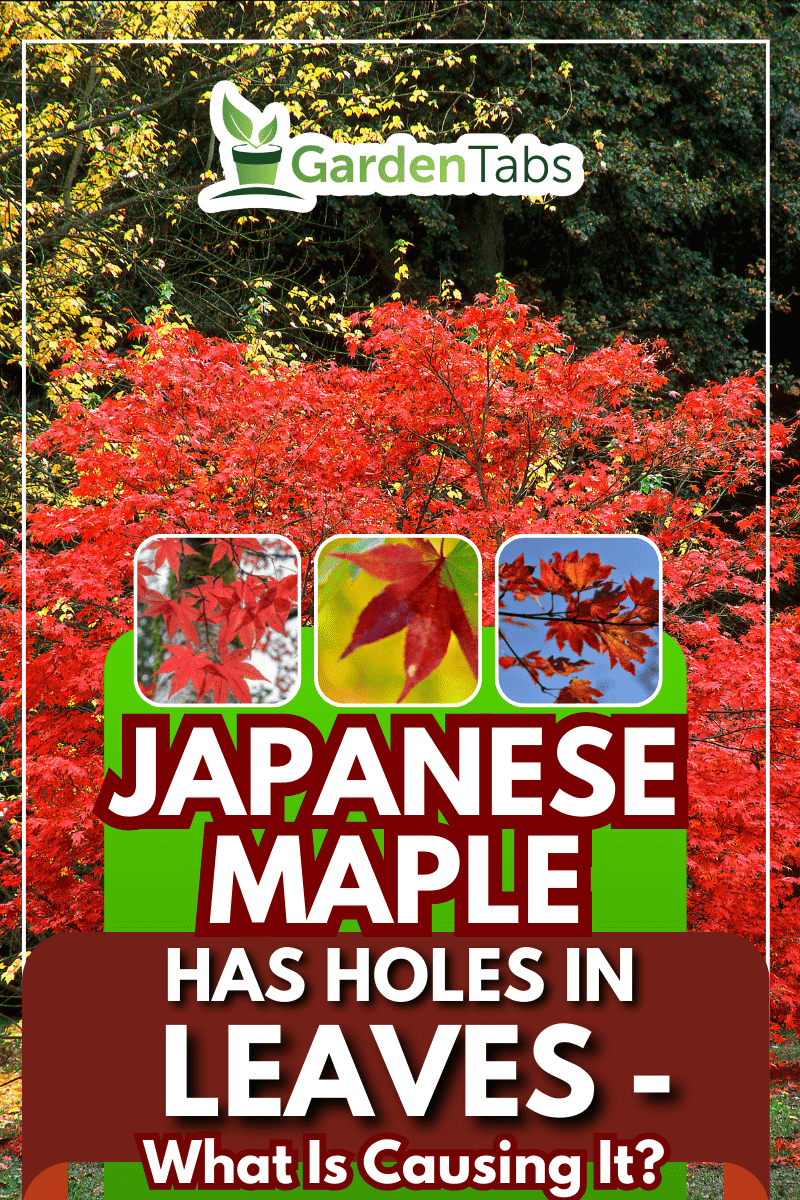
Causes Of Holes In Japanese Maple

Japanese maples often referred to as yucca, are unique and lovely trees that are endemic to that country. The question of what produces holes in Japanese maple trees is straightforward. The leaves frequently exhibit hollowing out of their distinctive cedar-like outer layer.
Below are the reasons for the holes in its leaves:
1. Pests
Japanese maples could face a variety of pest issues. Here are the common pests that attack the leaves of your Japanese Maple:
Bugs
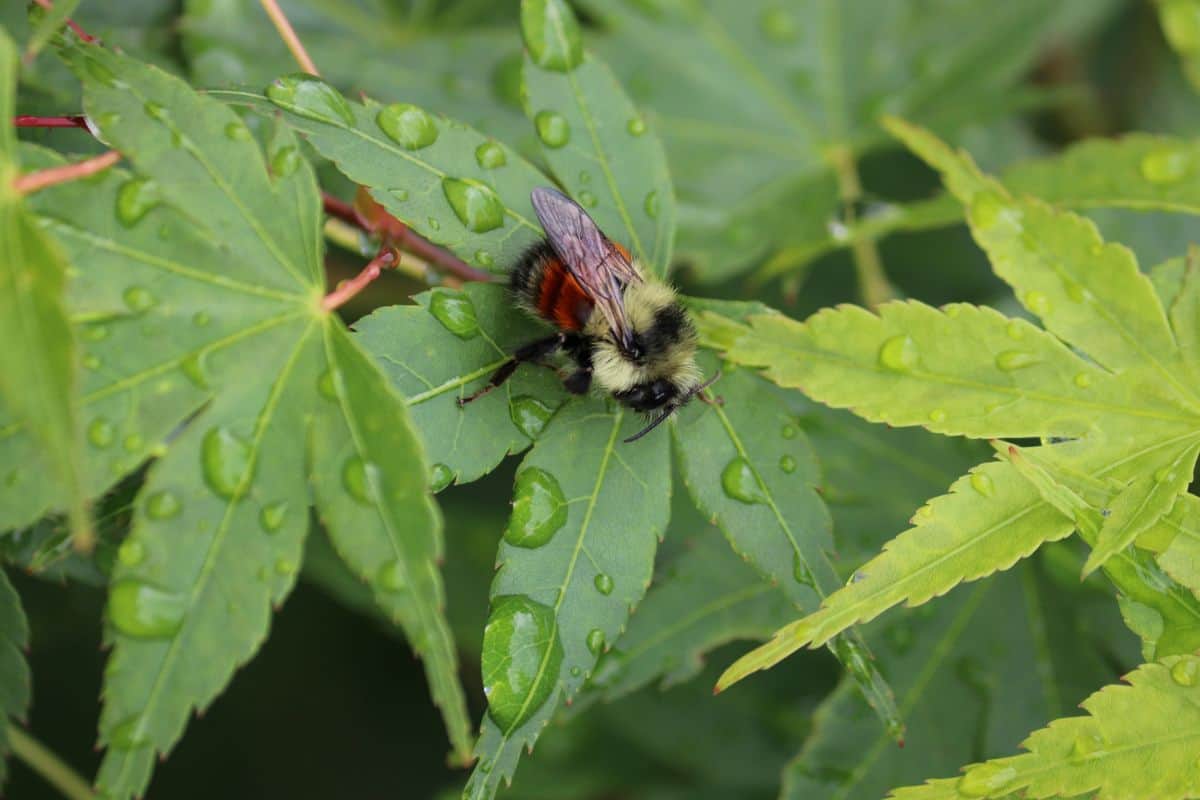
Bugs are the most frequent pests of Japanese maples. They can have the highly unpleasant habit of lingering over your trees while feasting on their leaves.
These insects are an unpleasant addition to your garden because they consume the leaf and its juices from the base. If you don't interfere, they multiply and spread out into the surrounding areas quite quickly, which makes things worse for you.
Sprinkle an insecticide if there are bugs around. However, you shouldn't use neem oil on Japanese maples.


Click here to see this insecticide spray on Amazon.
Scale
Scale is the Japanese Maple's most dreaded pest since it is challenging to eradicate. It has a spherical body covered by a hard shell. They are tiny and motionless.
These insects typically settle on tender, newly formed branches. They suck up valuable nutrients by penetrating the plant with their sharp jaws. Early leaf fall and yellowing are also possible with scales.
Controlling scales can be challenging, especially on trees like Japanese maples. Scrape the insects off the branch and throw them farther from the garden if there are only a few presents. You may use insecticidal soap to get rid of scale species.







Click here to see this insecticidal soap on Amazon.
Mites
Mites are little insects and may seriously harm Japanese Maple trees. They penetrate the leaves and ingest the nutrients.
The juices from the leaves are sucked out by these pests, which build colonies on the leaves. Thus, the leaves gradually become paler until they eventually turn brown.
Keep them from taking over your tree. Dispose of any severely damaged leaves. Wash the mites off the branch with a spray of water if they are just on one little branch.
Aphids
Aphids are soft-bodied insects with lengths up to 1/8 inch. Usually, you can find them on leaves, twigs, or bark. Aphids spread from one branch to the next because Japanese maples are broad trees with projecting leaves.
They can support themselves by puncturing the tree's soft tissues and removing the sap. Aphids excrete honeydew after eating plant sap. The sooty mold fungus develops on the honeydew, producing an ugly, dark fungal growth.
Aphids are exceedingly challenging to eradicate using insecticides. One aphid left alive has the potential to establish a new colony immediately. These pests can severely damage the appearance of a maple tree, but they will not kill the tree.
You can apply neem oil as soon as aphids appear and repeat every seven to ten days. If there are only a few aphids, you can crush them with your fingertips or wash them off with water. If widely dispersed, apply insecticidal soap on the leaves.




Click here to see this neem oil on Amazon.
Caterpillars
The caterpillars frequently harm Japanese Maple leaves. Caterpillars known as bagworms reside in characteristic spindle-shaped silk bags lined with tiny fragments of the host plant's leaves. The caterpillar's butterfly larvae form will look for simple plant material to digest, typically plant seedlings.
Gather the caterpillars and throw them out of the yard as a kind of control. Spray the leaves with Bacillus Thengiensis, which is entirely safe for the environment. If the above techniques weren't successful, you should spray the leaves with an aqueous pesticide solution.


Click here to see this thuricide on Amazon.
Vine Weed
The weevil's body is larger than the bodies of other insects. They can severely damage a sizable portion of the leaf plate. They frequently gnaw on the edges of the holes in the leaves.
You should add fresh mulch around the Maple, and you may sprinkle benevolent nematodes around it. The nematodes will destroy the larvae and stop their reproductive cycle.
Worms
These worms are borers, which means they can eat through the maple tree's wooden trunk. They injure the branches and bore through the nutrient-rich zones, weakening the tree's overall structure.
They consume the leaves and branches of young trees, depositing sawdust on the ground and inside their bores. Due to the holes they make in your tree, they are challenging to control.
2. Heat
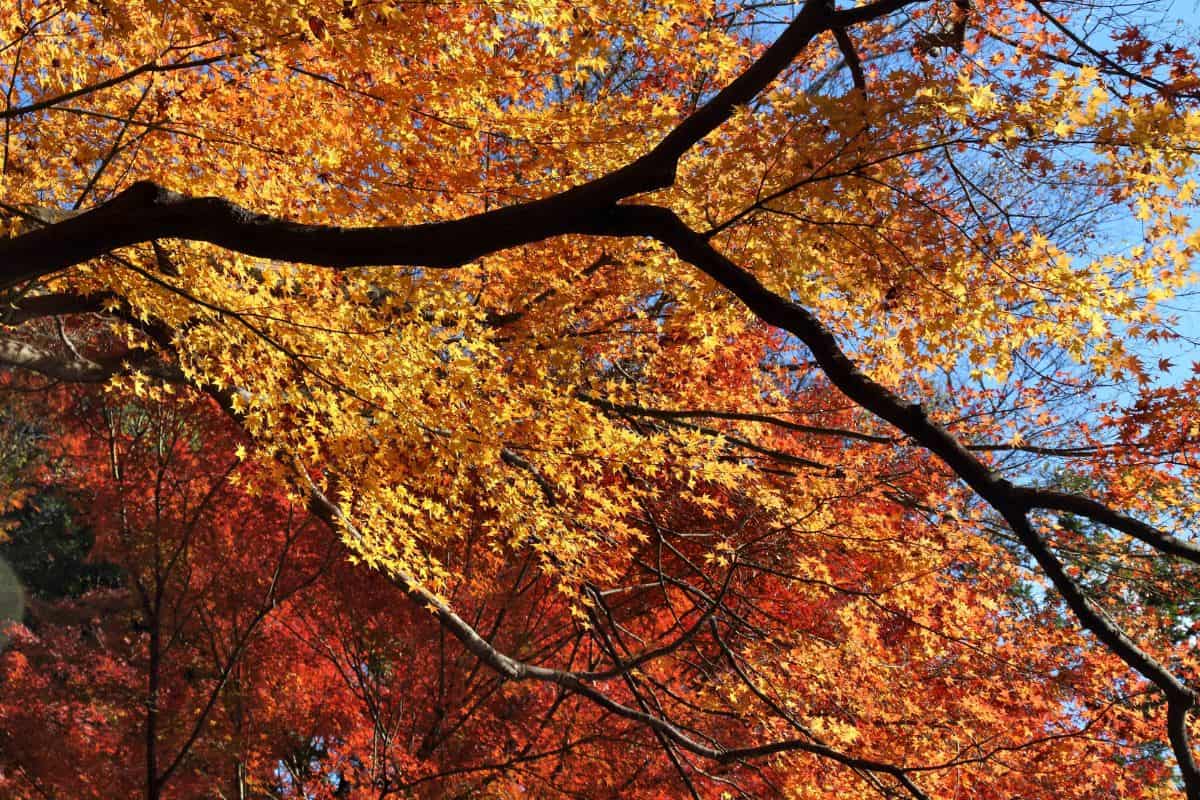
Small holes may result from water droplets on leaves exposed to the hot afternoon heat. Be careful to start your irrigation system early in the morning. This way, the foliage can dry before being harmed by the afternoon light. A Japanese maple should always be watered from the root.
3. The Tree Is Still Young
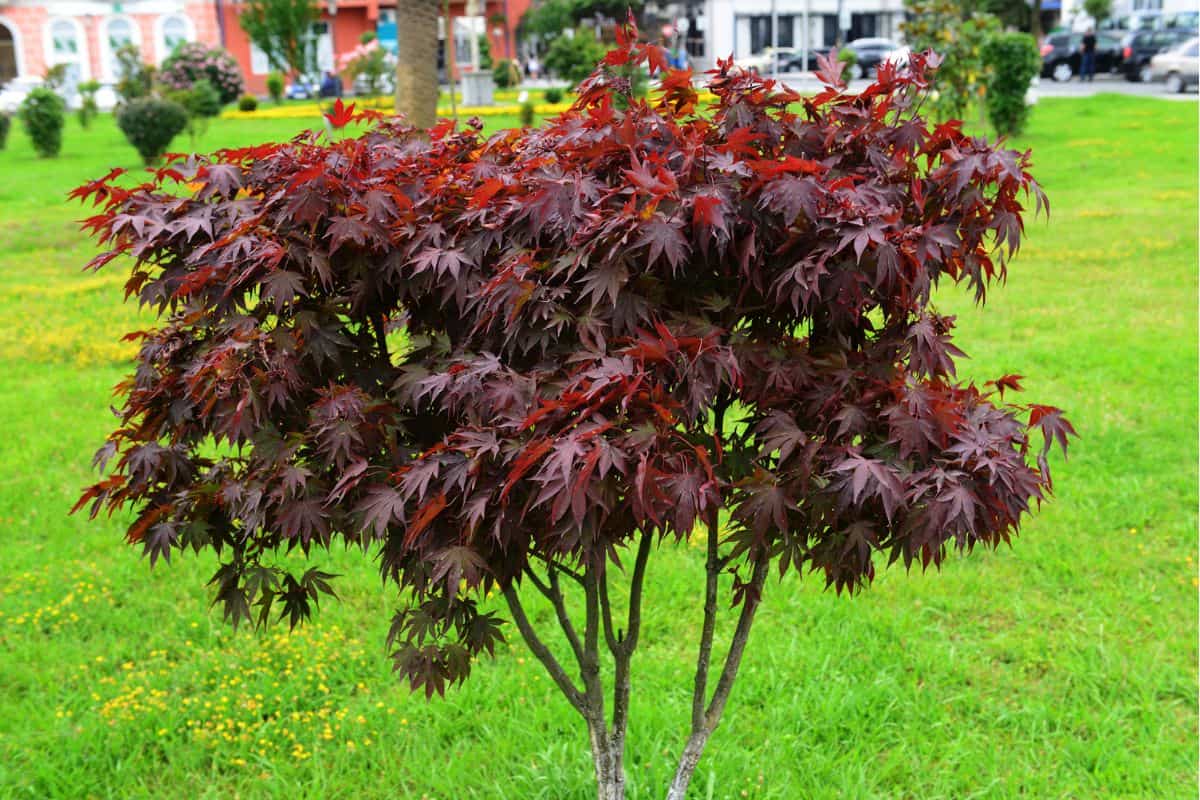
Younger trees are more likely to have holes in their leaves because they cannot produce their sugars and must obtain them from another source instead.
You may diminish the amount of sugar the tree receives, or it may not receive any sugar at all if its growth is hindered.
How To Treat Holes In Leaves Of Japanese Maple
Starting with the removal of significantly damaged leaves, dispose of them far from any other plants. Search for pest indicators like scale. If you notice them, it's time to treat the tree with your preferred pesticide.
Using a pesticide can stop these holes from developing on your leaves. You can spray it on the tree or use a cloth.
Also, you can use neem oil and organic insecticide to remove any leftover fungus. Any leaf spots will respond well to this neem oil. Apply neem oil to all afflicted plants, covering all exposed regions.
Some individuals have been using vinegar to attempt and get rid of bugs on Japanese maple trees. It has been discovered that oxalic acid, which is robust against pests, is present in vinegar.
Try to avoid overhead irrigation while watering trees because fungi love moist environments. Water your tree in the morning, so it has the entire day to dry.
Should You Prune A Japanese Maple?
Pruning a Japanese maple will restore its health and aid in the growth of new, healthy leaves. This is a quick and natural way to eliminate pests on your Japanese Maple.
Remove branches or limbs that appear dead or have a lot of insect activity by making the necessary pruning cuts. Use sharp, sterilized shears at all times.


Click here to see this stainless steel pruning shear on Amazon.
How Tall Will A Japanese Maple Get?
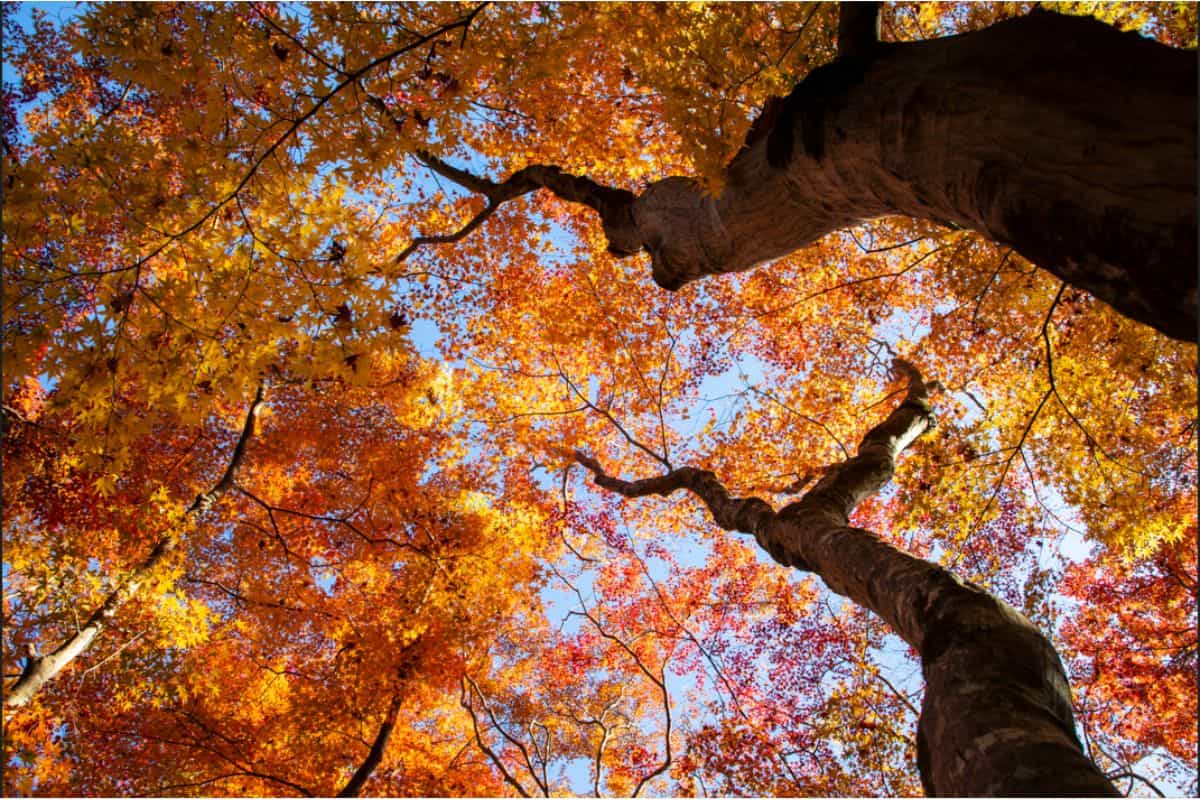
Japanese maple trees give color, height, interest, and texture to the garden or landscape with appealing gray trunks and red or green leaves. When young, the Japanese Maple often develops more quickly.
Japanese maples are a type of maple tree that can grow between 10 to 25 feet. However, it can reach 40 feet or higher in the wild.
In Closing
You must first identify the root of the problem if your Japanese maple leaves have holes. Neem oil or a pesticide will typically eliminate the pests and resolve the issue. You should check that these problems don't recur so you can care for the tree.
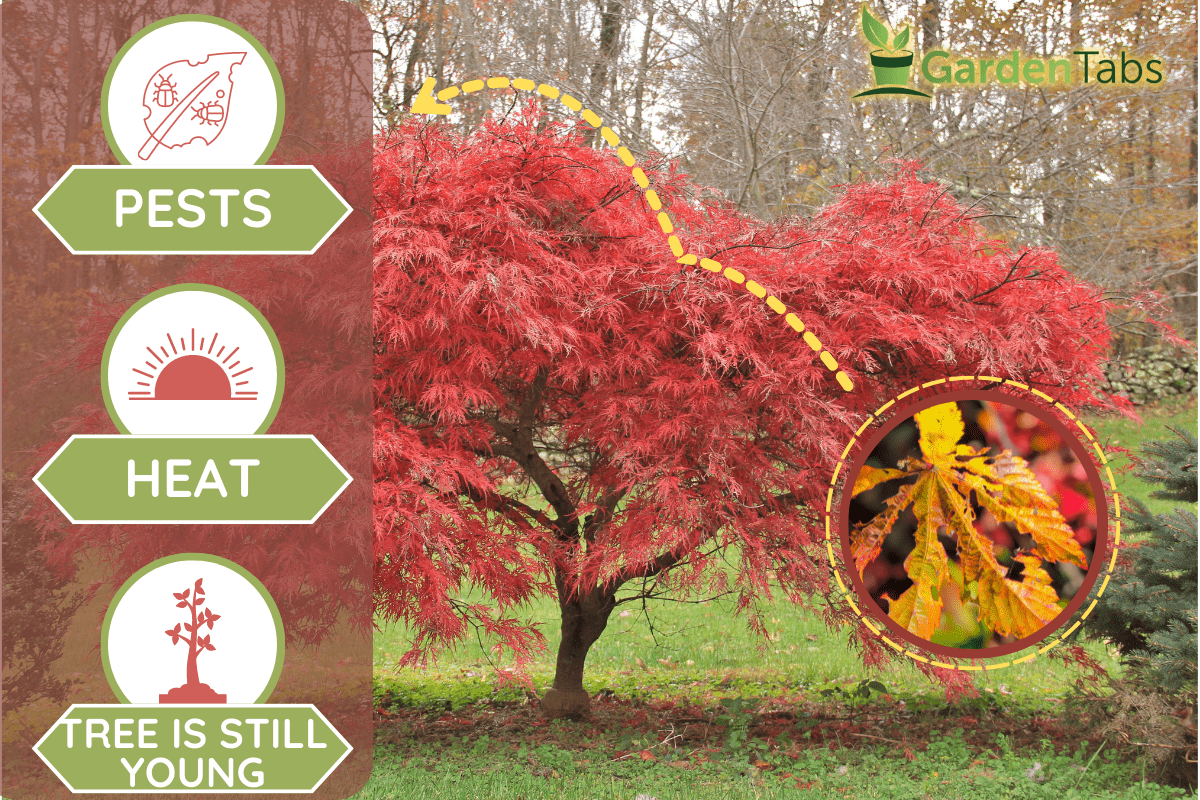
If you want to discover more about Japanese Maple, kindly check out these other related posts:
